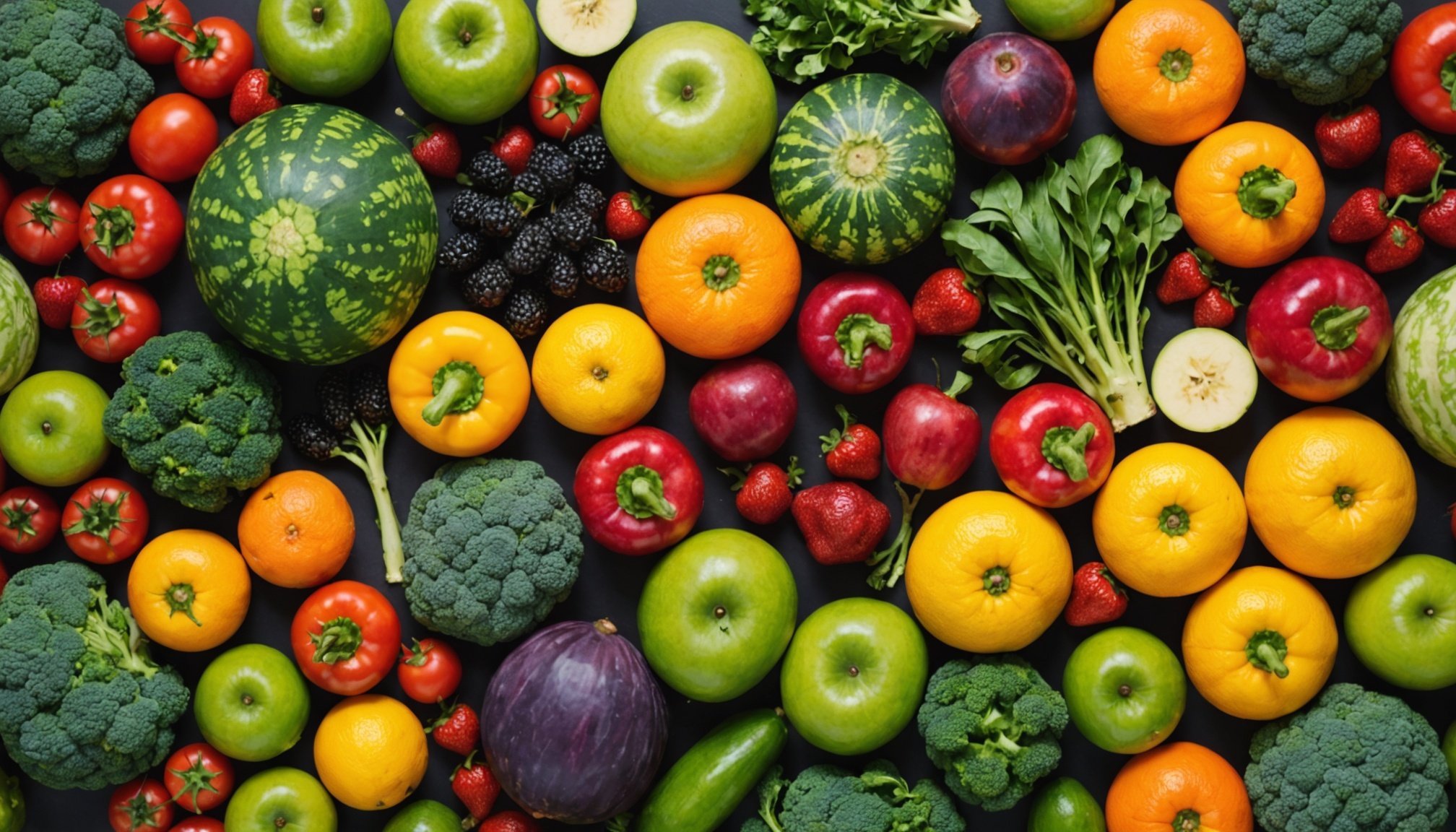The Health Benefits of Diverse Fruits and Vegetables
Engaging in a diet rich in various fruits and vegetables offers numerous health benefits. Diverse produce provides essential nutrients that bolster overall health. The vibrant hues of these natural foods are not just appealing but signify powerful antioxidants. Scientists have found that a spectrum of colors in your diet can enhance bodily functions and prevent chronic diseases.
Essential Nutrients and Their Benefits
Fruits and vegetables are packed with important nutrients such as vitamins C, A, and E, and minerals including potassium and magnesium. These components aid in maintaining skin health, eye health, and overall immunity. Additionally, high potassium levels help regulate blood pressure, promoting cardiovascular health.
Topic to read : Unlocking recovery: how mindfulness and yoga can reduce relapse rates in addiction treatment
Colors and Health Benefits
Each color in fruits and vegetables signifies different health benefits. For instance, red fruits like strawberries and tomatoes are rich in lycopene, a potent antioxidant linked to reduced cancer risks. Green veggies provide lutein and zeaxanthin, which are crucial for eye health.
Scientific Insights
Numerous scientific studies highlight the health advantages of dietary diversity. Research consistently demonstrates that a varied intake of produce contributes to a lower risk of heart disease, diabetes, and obesity. In conclusion, championing a colorful diet is a tasty and effective strategy for maintaining optimal health.
Additional reading : Renew family connections and stress relief: exploring the benefits of digital detox retreats
Nutritional Value of a Vibrant Palette
Explore the impressive nutritional content of fruits and vegetables as you discover their profound impact on health. A colourful selection of produce can transform your diet.
Vitamins and Minerals
Delve into the richness of vitamins and minerals. Fruits and vegetables are extraordinary sources of essential vitamins like vitamin C, which supports the immune system, and vitamin A, vital for vision and skin health. Potassium, found abundantly in bananas and spinach, helps maintain heart function and normal blood pressure levels.
Antioxidants
Antioxidants in fruits and vegetables play an essential role in counteracting chronic diseases. These powerful compounds, such as the anthocyanins in blueberries and the beta-carotene in carrots, protect against cellular damage. Antioxidant-rich foods can significantly reduce the risk of illness by neutralizing free radicals.
Fiber and Digestive Health
Dietary fiber is another crucial component found in produce. It supports digestive health by facilitating regular bowel movements and preventing constipation. Consuming high-fiber foods, including apples, broccoli, and lentils, can aid in maintaining a healthy weight and managing blood sugar levels. A varied intake of fiber-rich fruits and vegetables ensures a balanced and effective digestive system.
Practical Tips for Incorporating More Produce
Increasing your intake of fruits and vegetables can be simple and enjoyable. Here are some practical tips to help you seamlessly integrate more vibrant produce into your daily meals.
Planning your meals in advance is a strategic approach to ensure a diet rich in fruits and vegetables. Allocate time once a week for meal preparation, focusing on dishes that incorporate a wide array of colorful produce. You might consider crafting a rainbow-themed week, assigning a particular color group to each day—such as red tomatoes on Monday or green spinach on Tuesday. This not only adds variety but ensures you are reaping the full spectrum of health benefits.
For a family-friendly approach, involve children in the selection process at the grocery store or farmers market. Encouraging them to pick out unfamiliar fruits and vegetables can inspire tasting new and exciting flavors. Have them assist in the kitchen as well; simple tasks like washing produce or arranging vegetable sticks for snacks can make healthy eating a fun family activity.
To further increase your consumption, add a variety of vegetables to traditional recipes. Mix grated carrots or zucchinis into soups and sauces. Likewise, make fruit more accessible at home by keeping a bowl of assorted fruits on the kitchen counter.
Delicious Recipes for a Colorful Plate
Infusing vibrant fruits and vegetables into your meals is not only nutritious but also adds delightful flavours. Below are some creative ideas for crafting healthy recipes with fruits and vegetables.
Smoothies and Juices
Smoothies are a simple way to enjoy the health benefits of various fruits in one go. Combine spinach, kale, banana, and mango with a splash of orange juice for a green smoothie that boosts energy. For a refreshing summer drink, blend watermelon, mint, and a squeeze of lime to invigorate your senses.
Salads and Bowls
Colourful salads make for a satisfying meal. Toss together baby spinach, strawberries, cucumbers, and avocado, drizzled with balsamic vinaigrette for a sweet and tangy twist. An alternative is mixing quinoa with black beans, chopped bell peppers, and a hint of lime for a filling and nutritious bowl.
Cooking Techniques for Flavorful Vegetables
Roasting is an effective technique to bring out the natural sweetness of vegetables. Try roasting carrots, beets, and sweet potatoes with olive oil and thyme for a rich and hearty side. Alternatively, sauté fresh broccoli and garlic in a dash of soy sauce to create a flavourful stir-fry that complements any main dish.
Tips for Sourcing and Preparing Produce
Navigating the world of produce involves not just selecting what to eat but understanding how to choose fruits and vegetables that offer the greatest health benefits. Opting for seasonal and local produce can significantly enhance nutritional content. Local farmers’ markets are excellent resources for fresh fruits and vegetables, often harvested at peak ripeness. When targeting health benefits, freshness is key as nutrients can degrade over time.
The debate between organic and conventionally grown produce often centers on pesticide exposure and nutrient density. Organic produce generally has fewer pesticides and may sometimes offer higher levels of certain nutrients, providing an advantageous option for those invested in reducing chemical intake. However, if budget constraints arise, consider following the “Dirty Dozen” guidelines to prioritize organic where it matters most.
To keep produce fresh and maximise shelf life, effective storage is crucial. Leafy greens benefit from being washed and stored in air-tight containers with a paper towel to absorb moisture. Fruits like berries should only be washed before consumption to prevent mould growth, while vegetables like carrots and celery can be stored in water to maintain crispness. Proper storage supports nutrient preservation, ensuring that the health benefits are maintained until consumed.

